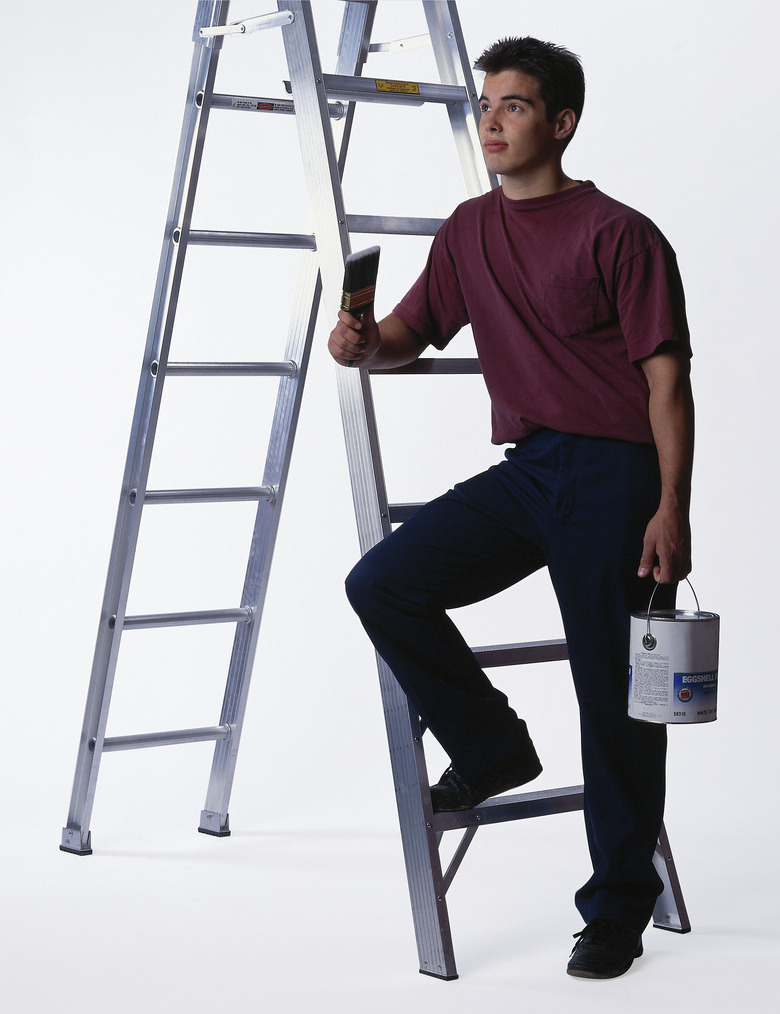Painting Over Soot Covered Walls
Things Needed
-
Sponge
-
TSP or mild detergent
-
Alkyd primer
-
Disposable paint brush
-
Scrubbable acrylic-latex paint
-
High quality paint brush
Tip
You can prevent candle soot by using soy-based candles.
Warning
Do not use a latex primer because soot is water-soluble, and will bleed through the latex. Wear gloves and safety glasses when using TSP.
Soot and smoke from candles, fireplaces or cigars and cigarettes can be quite unsightly on interior plaster or sheetrock walls — and that smoky residue may also produce some unpleasant odors. Simply covering the soot with low-priced latex paint won't solve the problem. What's needed is a systemic approach that removes surface soot particles, seals embedded smoky content behind a primer, and tops off the job with a scrubbable finish coat that will prevent the problem from re-appearing.
How to Paint Over Soot Covered Walls
Step 1
Wipe down the walls with a damp sponge to remove any particulates that have loosely adhered to the wall. You can soak the sponge with a mild detergent or a weak dilution of TSP, but do not allow drywall surfaces to become saturated with water because this may damage the sheetrock. Unless the soot marks are relatively minor and new, you will find it difficult to completely remove the stains because they have become embedded into the existing coat of paint.
Step 2
Apply a stain-covering alkyd primer over the affected area, using a disposable paint brush. Most primers will exhibit some stain covering capacity, but by selecting a primer that highlights that ability in its name or high on its list of features, you will get the benefit of maximum hiding power. Follow up by applying the primer to the entire wall to ensure that the topcoat adheres to a uniform surface. Allow one to two hours for the primer to dry before applying the next coat.
Step 3
Apply two coats of a scrubbable acrylic-latex paint over the primer, using a high-quality brush or roller to eliminate the risk of lap-marks. The scrubbable paint will allow you to easily wipe future soot accumulations off the wall without damaging the finish.
